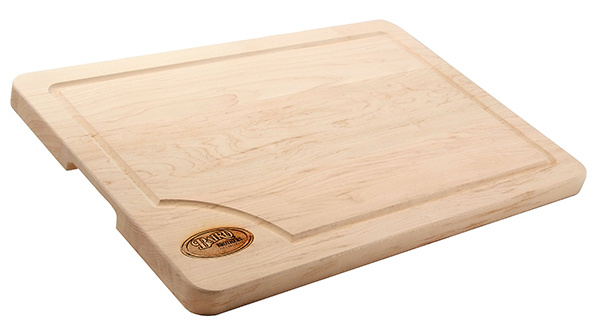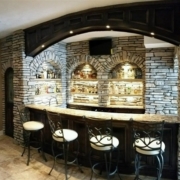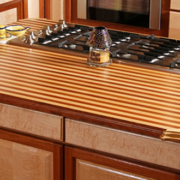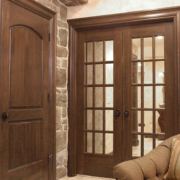Choosing the Best Hardwood for Cutting Boards
If you enjoy spending time in the kitchen, one of the best tools you can have is a hardwood cutting board.
Believe it or not, wood can have more sanitary benefits than plastic when preparing food. Let’s take a look at the best species of hardwood for cutting boards (also called chopping boards), taking into account their characteristics, food safety properties and maintenance.
What’s the Best Type of Wood for a Cutting Board?
There are many good wood types to choose from for a high-quality cutting board. One trustworthy indicator of identifying which hardwood makes a good cutting board is to see where the wood species falls on the Janka scale.
The Janka scale, or hardness rating, is how resistant wood is to dents, wear and tear.
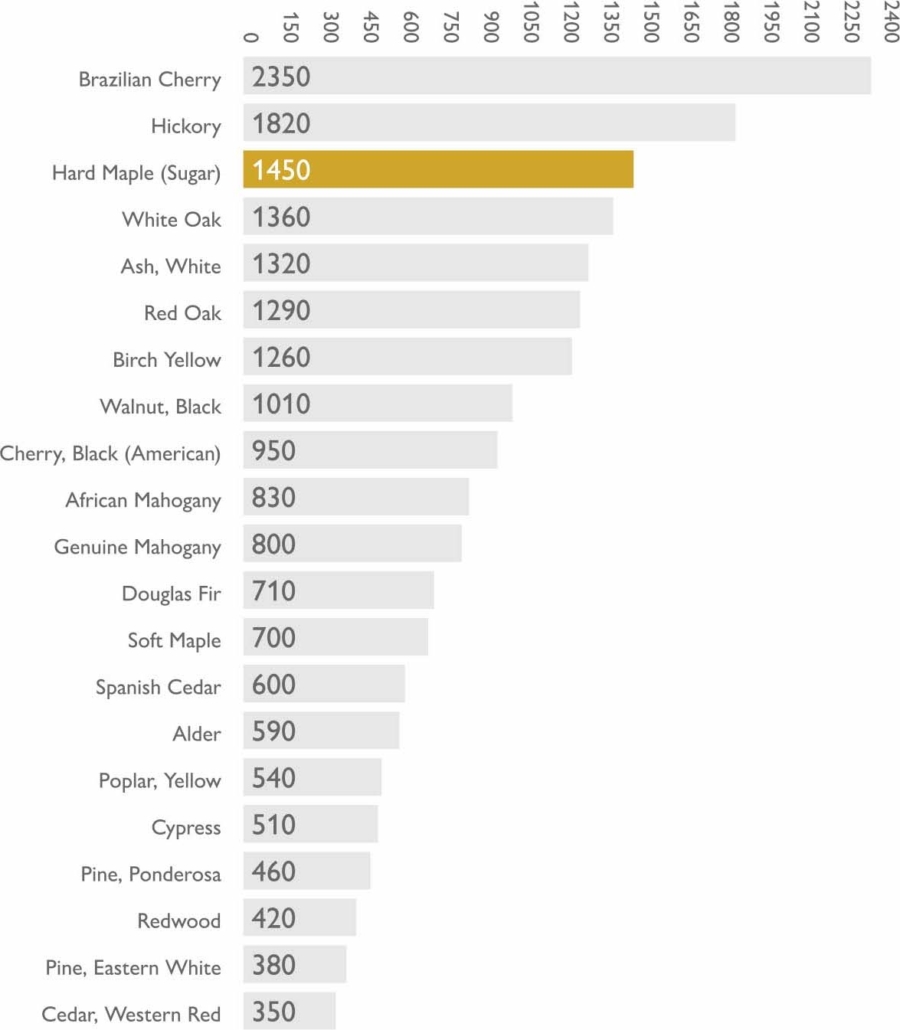
Janka scale with maple highlighted.
Maple might be considered the best wood for cutting boards. Maple cutting boards won’t dull knife blades but are scratch resistant. Maple wood is often more affordable because it is native to North America, growing in (sometimes) harsher conditions like the Midwest, lending to a larger supply of product. Walnut cutting boards can also handle a great deal of knife usage.
Considering making your own cutting board? Be sure to check out the video at the bottom of this post for a quick and easy DIY cutting board project!
Types of Hardwood
Softwoods are not a good choice for cutting boards because they can crack and create splinters. On the other side, very hard wood options will quickly dull knives. Let’s look at a range of wood types to understand the different traits of hardwoods.
Walnut
Walnut falls at 1010 on the Janka scale. American walnut wood is usually darker than European walnut. Overall, walnut heartwood is light or dark brown. Walnut is popular for carvings, cabinets, musical instruments and more.
Teak
Teak is listed at 1155 on the scale. This wood is water-resistant. As a result of its rubber and oil content, teak wood won’t expand or warp with humidity and popular uses include teak cutting boards, boat building and outdoor furniture.
Hard Maple
Hard maple has a hardness rating of 1450. (It is also known as sugar maple.) Typically, the grain is straight. Sapwood is more common and is a neutral white or cream color. Because of its durability, hard maple is popular for bowling alley lanes, cabinetry, furniture and countertops.
Things to Keep in Mind When Choosing a Cutting Board
A crucial factor in choosing a type of wood for a cutting board is food safety. Three major traits determine whether or not a hardwood species is considered food-safe.
-
Porosity
Porosity refers to the likeness of a wood to “soak” in liquid. Large pores allow for mold and bacteria growth. Mahogany, oak and butternut woods are very porous and are not advised for meal prep, especially when working with raw meat.
-
Grain
Closed-grain woods relate to pores, as well. Small pores mean closed grains and are the preferred choices for food use.
-
Toxicity
Some woods like birch, pine and rosewoods are not food-grade. They excrete sap and oils that are not healthy for humans to ingest with food.
Maintaining Your Hardwood Cutting Board
As with any high-quality hardwood, there is some upkeep required for your wood cutting board. After each use, use gentle dish soap and wash both sides of the board. This prevents warping. Don’t put a wood cutting board in the dishwasher – It will crack and warp from extreme temperature changes and high moisture! (Unfortunately, if deep cracks or splits start to form, it’s time to purchase a new hardwood cutting board.)
It’s also recommended to treat the cutting board with food-grade mineral oil regularly. Doing this keeps the wood hydrated, prolonging the life of the board. This practice also shows the natural luster and characteristics of the hardwood. Avoid certain oils, like vegetable and coconut oils (the natural odors of food oil will stay with the wood), and instead, stick with mineral oil or a beeswax/mineral oil blend.
When using mineral oil, start with a few drops in the center of the board. Rub the oil outward, making sure the oil gets into every crevice throughout the board surface. The wood will soak up the oil, so it’s OK to add more as you work it in.
Hardwood Cutting Board Grains
A cutting board as unique as the person using it. How the hardwood is cut makes each board functional in different ways, too. Depending on the woodcut, there are a few different types of cutting boards.
-
Face grain cutting boards
These boards use the widest part of a piece of wood. Wood is cut lengthwise, showing grain characteristics, and these types of boards are often used to display food on a charcuterie board or serving platter.
-
Edge grain cutting boards
Also known as long grain boards, edge grain boards are created by gluing strips of wood with the edge of each piece sideways. By doing this, the length of the grain is on full display. Edge grain cutting boards can show wear and tear faster if not well maintained.
-
End grain cutting boards
With end grain boards, the wood grain runs perpendicular to the surface. This creates a longer-lasting cutting board. It’s also better for knives, keeping them sharp. Checkerboard designs are usually end-grain cutting boards.
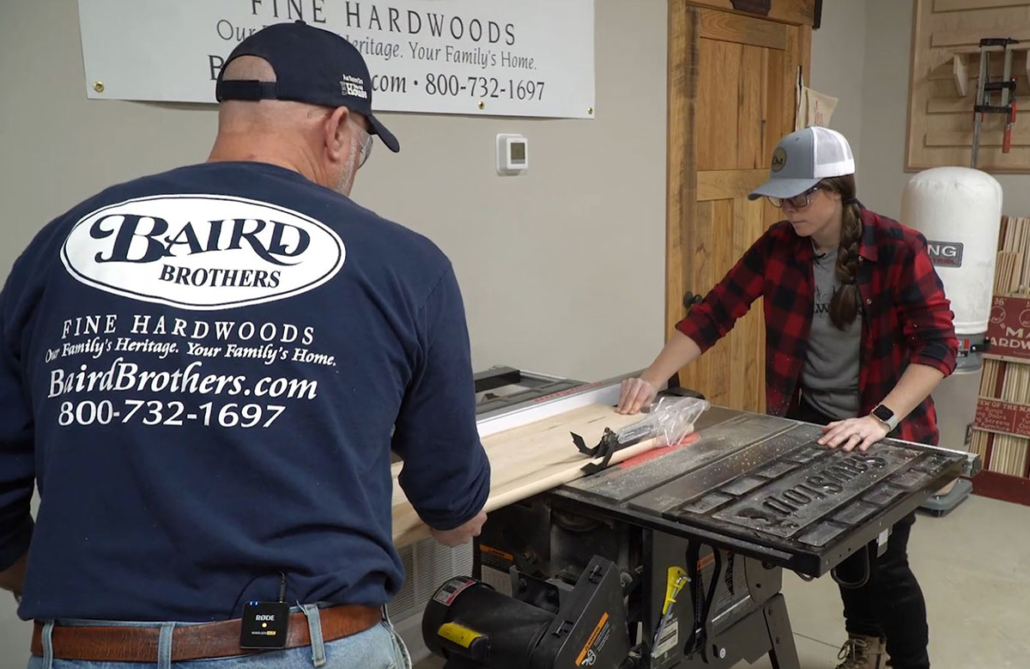
Trimming lumber to size for a DIY hardwood charcuterie board.
A popular cutting board feature that has both visual appeal along with practicality is a juice groove. This is a groove toward the outer edges of the hardwood cutting board that collects liquids from the food being chopped.
In recent years, it’s become increasingly popular for homeowners to opt for hardwood butcher blocks, which are heavier, thick chopping blocks. Butcher block tops can be incorporated into the overall kitchen design or used as large, standalone elements.
Custom Butcher Block and Plank Countertops
If you’re on the search for something bigger than a typical cutting board, Baird Brothers is proud to work with customers in creating fully custom plank and butcher block countertop options. Plank-style countertops are extremely popular in contemporary and modern rustic design styles, while butcher block tops lend themselves toward a colonial or traditional American setting. Tops are available in nearly any size, shape or specie.
Difference Between Cutting Boards and Charcuterie Boards
You might be asking yourself what is the difference between a hardwood cutting board and a charcuterie board. (It’s a great question!)
A cutting board is just that: a board made of hardwood used as a cutting surface during the preparation stages of cooking. A charcuterie board is what is used as a serving platter for an array of cheeses, cured meats, crackers and fruits.
While entertaining, many hosts choose to use a board without knife scratches. This leads to people opting for both a wooden cutting board and a hardwood charcuterie board.

DIY wood cutting boards from Build It With Baird.
Get Your Next Hardwood Cutting Board
Now that you know the best type of hardwood for cutting boards, it’s time to add one to your kitchen. You can buy high-quality maple cutting boards from Baird Brothers and get to food prepping today!
If you’re into woodworking and would rather create your own, check out our recent Build It With Baird episode for steps on building a DIY wooden cutting board or charcuterie board. Afterall, anyday is a good day if you’re making some sawdust!

